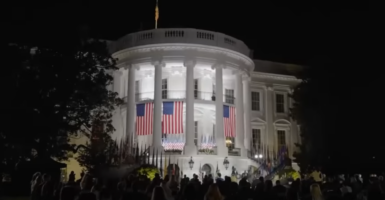Schools That Stayed Remote Longer Faced Steepest Enrollment Declines
A new study finds that schools that stuck with remote learning for extended periods were faced with the steepest declines in enrollment.

A new report has verified that public schools which taught virtually for longer have seen the sharpest enrollment declines. National public education enrollment is facing severe drops, teacher shortages, and ongoing battles to balance academic achievement with government-imposed identity politics. Yet the new information on how remote learning has affected public school rates displays many interesting trends.
After schools closed for the 2020 lockdowns amid remote learning, enrollment declined by 2.5% across the United States. The next school year, 2021-2022, saw another nationwide drop of 1.2%. This may not seem like a large portion of the student body, but that is 1 in 22 students, and if this trend continues, public school funding, class size, and total structure may need to be revamped for the system to survive.

It is no secret that homeschooling increased in popularity throughout the pandemic, and not only that but many parents have chosen to remain teaching their children at home even as schools resume in-person learning. There are numerous factors that may have led to this decision, but remote learning was definitely included. Many parents who were taught that only college-educated experts could teach quickly learned how fast children absorb information when taught on a personal level. Plenty of students excelled quicker, taking less class time at home, and that in itself led parents to question the validity of modern public school teaching methods.
What’s more, students who returned to public school were directly linked to the schools’ COVID-19 safety procedures and protocol. Areas with strict masking policies saw the same sort of decline as schools that continued remote learning. It was known early on in the pandemic that children were at little to no risk of COVID-19 issues. It was reported by November of 2020 that children also did not increase the risk of infection for adults (as previously believed), but that adults living with children were actually less likely to die of COVID. Knowing this, parents had to choose between following strict guidelines based on outdated information, or find other means for educating their children.

Then comes the most shocking news of all. Areas with higher enrollment declines were also in districts that support The Biden Administration. This piece of information is the most striking being that The Biden Administration led the Democrat party’s crusade to extend emergency procedures and keep children isolated with remote learning and mask policies for greater periods of time.
This data comes with more significant answers to the question of how and why parents are leaving the public school system. Remote learning was definitely a large factor in the mass exodus from public education, but the trend’s connection to strict masking policies and areas that vote more liberal shows a more defined pattern. It displays how many parents in blue areas are not happy with the way that Democrats have handled the pandemic, and that these areas may harbor more conservative families than previously thought. In addition, the data also leads many to wonder if these responses will have any indication of what the midterm elections will bring and how that will affect education trends.



